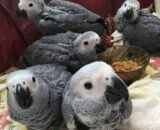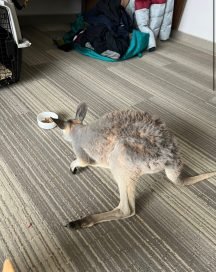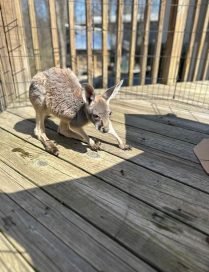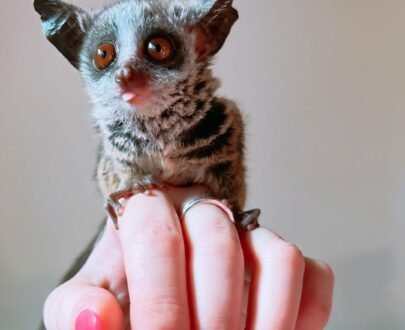- You have no items in your shopping cart
- Subtotal: $0.00
KINGDOM
Animalia
PHYLUM
Chordata
SUBPHYLUM
Vertebrata
CLASS
Mammalia
INFRACLASS
Marsupialia
ORDER
Diprotodontia
FAMILY
Macropodidae
GENUS
Macropus
SPECIES
Macropus giganteus
The Eastern Eastern Gray Kangaroo (Macropus giganteus) is a marsupial found only in Australia. It is the second largest and heaviest living marsupial and native land mammal in Australia. It is also known as the Great grey kangaroo and the Forester kangaroo.
Appearance
The Eastern Gray Kangaroo is easy to recognize: its soft grey coat is distinctive, and it is usually found in moister, more fertile areas than the red. Red kangaroos, though sometimes grey-blue in color, have a totally different face than eastern grey kangaroos. Red kangaroos have distinctive markings in black and white beside their muzzles and along the sides of their face. Eastern grey kangaroos do not have these markings, and their eyes seem large and wide open. They have a powerful tail that is over 1 m (3 ft 3 in) long in adult males. Large males of this species are more heavily built and muscled than the lankier Red kangaroo and can occasionally exceed normal dimensions.
Distribution
Geography
CONTINENTS
Oceania
COUNTRIES
Australia
BIOGEOGRAPHICAL REALMS
Australasian
WWF BIOMES
Mediterranean forests, woodlands, and scrub, Temperate broadleaf and mixed forest, Temperate grasslands, Tropical savanna, Tropical dry forest
The Eastern grey kangaroo is widely distributed across eastern mainland Australia, from northeast Queensland to South Australia in southeast, and southern Victoria, including eastern Tasmania, and it has been introduced to Three Hummock Island and Maria Island. This kangaroo inhabits areas that have higher rainfall, including woodland, mallee scrub, dry sclerophyll forest, shrubland, and heathland. It needs trees or scrubs for cover, along with open areas for feeding. It can occur also in introduced grassland, agricultural land, and other modified landscapes.
Habits and Lifestyle
Being a social species, Eastern grey kangaroos usually live in mobs or small groups, which include one dominant male, 2-3 females and their young, and 2-3 young males. They spend most of the day in the shade, moving out at dusk, and feeding until dawn. The adults communicate with their young and with each other using clucking noises. When they are alarmed, they can make a guttural cough, also used when males are warning each other, fighting, or displaying dominance. Grey kangaroos stamp on the ground with their hind legs when they sense danger, which, as well as the guttural noise, issues an alarm sound that can be heard from a great distance
Diet and Nutrition
Eastern grey kangaroos are herbivores (graminivores, folivores). They graze on grasses, leaves, herbs, and other low, shrub-like vegetation.
Mating Habits
MATING BEHAVIOR
Polygyny
REPRODUCTION SEASON
Year-round with a peak in summer
PREGNANCY DURATION
36 days
BABY CARRYING
1 joey
INDEPENDENT AGE
18 months
FEMALE NAME
jill, roo
MALE NAME
jack, boomer
BABY NAME
joey
Eastern grey kangaroos are polygynous animals. Adult males take part in ritualized fights with rivals, and the dominant male being the most likely the only one to mate with the available females. Breeding continues throughout the year, peaking in summer. The young is born following a gestation period of 36 days. At about 9 months old, the joey leaves its mother’s pouch for short periods, exploring the world with very brief little hops around the mother. Joey leaves its mother’s pouch at 11 months old, though it is still suckling. When the joey is 18 months old it is fully weaned and leaves the pouch permanently. Females are reproductively mature at about 20 to 22 months, and males at 43 months.










Customer reviews
Reviews
There are no reviews yet.
Write a customer review